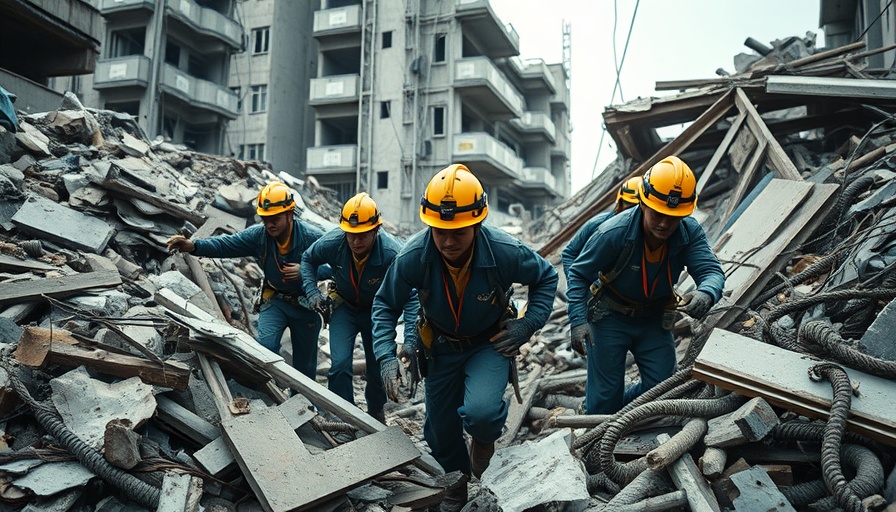
A Devastating Earthquake Strikes Myanmar
On March 29, 2025, Myanmar was rocked by a devastating 7.7 magnitude earthquake, resulting in over 1,600 fatalities, while at least 3,408 individuals have been reported injured. As search and rescue efforts continue, the government has indicated that these numbers are likely to rise, with nearly 139 individuals still unaccounted for. Witness accounts and rescue teams on the ground report extensive damage and significant challenges in ongoing operations.
The Broader Impact of the Earthquake
This earthquake has severely affected an area where more than 18 million residents live, situating it within a context of a humanitarian crisis exacerbated by a protracted civil conflict. Francesco Capoluongo from the International Federation of Red Cross in Myanmar emphasizes, "Many of these 18 million people are now without safe shelter, access to clean water, reliable health care." This considerable loss highlights the urgent need for relief and recovery efforts in affected areas.
Search and Rescue Efforts: A Race Against Time
Rescue teams are tirelessly working to navigate rubble and debris to locate survivors. Reports indicate immense difficulty in validating casualty figures due to the scope of destruction. The severity of the situation led Myanmar's National Unity Government to announce a temporary two-week ceasefire to allow humanitarian aid organizations and UN agencies to deliver much-needed assistance. The People's Defense Force pledged to assist in safety logistics as search operations unfold.
The Earthquake's Physical Toll
The earthquake’s epicenter lies near Mandalay, where collapsed structures and damaged infrastructure, including roads and bridges, pose considerable obstacles for rescue operations. Many government buildings have also been affected, impeding official responses. In total, over 1,590 residential structures have suffered damage in the Mandalay region alone, intensifying the urgency for aid.
International Response and Support
Neighboring countries have begun offering aid, including Thailand, where some damage occurred as well. International relief organizations are stepping up, coordinating with local authorities and NGOs to secure a rapid response. Observers stress the importance of international support in addressing not only immediate relief but also the long-term needs of those affected, considering previous vulnerabilities exacerbated by ongoing conflict.
Humanitarian Crisis Amid Civil Turmoil
This earthquake strikes a nation already in crisis, grappling with protracted internal strife and humanitarian issues. The civil war ravaging the country has complicated movement for relief teams and made residents vulnerable to such disasters. As the focus pivots to recovery, understanding the broader implications of this catastrophe on the already fragile infrastructure and communities remains imperative.
Future Implications for Myanmar
The implications of this tragedy extend beyond immediate relief efforts. The juxtaposition of a natural disaster against a backdrop of civil unrest raises questions about future humanitarian strategies in Myanmar. The resilience of the local populace combined with external support will be critical in addressing both the physical rebuilding of communities and the psychological recovery from such a traumatic event.
As events continue to unfold in Myanmar, it is crucial for the international community to remain engaged, providing necessary resources and strategies to facilitate recovery across multiple sectors. We encourage readers to stay informed and support humanitarian efforts in any way they can during this critical time.
 Add Element
Add Element  Add Row
Add Row 



 Add Row
Add Row  Add
Add 


Write A Comment